
Project Gallery 2023
Secondary students from across Europe became exoplanet detectives with ESA and used Cheops satellite data to uncover the mysteries of two exoplanet targets: KELT-3b and TOI-560c.
Explore the projects below.
Planeterra
Best Project Prize Winner
Gymnazium Brno-Bystrc Brno – South Moravia Czech Republic 15 years old, 19 years old 3 / 0
https://photohorak.cz/TOI-560c.html
Youtube Video Link:
https://www.youtube.com/watch?v=0SZ2f3I-MtM
TOI-560c
TOI-560c project description:
In a solar system far, far away… 103 light years to be exact, we find our desired exoplanet. As the name suggests, our TOI-560c is not the only exoplanet in its solar system. Although small, the system contains a second planet about twice the size, called TOI-560b. Both orbit a K-type star, TOI-560, outside the habitable zone of the solar system.
TOI-560c Results and Analysis
Planet size
We first determined the planet’s diameter to be 30550.62 metres, with a transit depth of 0.01372%. To calculate the radius, we first used the Allesfitter multiplier of 2.395. This gave us a radius of 15,275.3 kilometres. Now with a formula of where H is the light curve difference we took from the Cheops light curve measurement graph which was 99.862, meaning the difference added up to 0.137. From this we got the multiplier of 2.646, which gave us a radius of 16,752.7km, or about a 10% difference from the primary Allesfitter output.
Orbit length
We know that TOI-560c has a year period of 18.87 Earth days, which makes its year much shorter than here on Earth.
In the solar system, both planets orbit very close to their star. So close, in fact, that the highest orbit is much lower than the orbit of Mercury in our Solar System. Since we know the distance of TOI-560c from its star, we can calculate the length of its orbit to be 117,106,752.8 km. And from the length, we can determine the orbital speed to be 720,958.63 m/s.
The orbits of both planets are similar in terms of inclination, which only reaches an irregularity of 0.4 from 90°. Both planets B and C have a very similar orbital inclination, so we can say that they are not travelling planets that would find their way into this solar system and stay there because of the gravitational pull, but rather that they were created at a very similar time.
Solar system
TOI-560c is not the only planet in its solar system. A second planet orbits TOI-560. Both were discovered using the transition method. In addition, TOI-560b and TOI-560c have almost identical inclinations at almost 90 degrees from our point of view, further evidence that they were formed at a similar time in the past. But there are some differences. Mainly in size and orbit. TOI-560b has an orbital period of 6.39 days, half that of TOI-560c, according to exoplanet.eu. TOI-560b is measured to be 0.249 the size of Jupiter, while TOI-560c is only 0.23. There are also some differences in the colours, we have made some hypotheses about the chemical composition of TOI-560c which lead directly to the colour scheme, all is mentioned in the “Atmospheric hypotheses” tab. Both planets are also well outside the habitable zone.
The Extrasolar Planet Encyclopaedia — HD 73583 c. (n.d.). http://exoplanet.eu/catalog/hd_73583_c/
Planet age
According to http://exoplanet.eu/, our exoplanet is quite young at 750,000,000 years old. At this age, the Earth was still in the Precambrian era, meaning that only organic clusters formed into prokaryotic cells, from which eukaryotic cells evolved. However, during the Precambrian, surface temperatures were only a few degrees above 0°C.
But what about TOI-560c? The surface temperature was measured to be around 225, not a very habitable environment compared to Earth. Although we could speculate about thermophilic cells with extra thick cell walls that have adapted to these temperatures. For example, near the Kavachi volcano on Earth, water temperatures reach around 68 °C and sharks still live there. But for TOI-560C, we have limited our suggestions to small organisms, depending on the atmospheric content and pressure.
The Extrasolar Planet Encyclopaedia — HD 73583 c. (n.d.). http://exoplanet.eu/catalog/hd_73583_c/
Atmospheric hypotheses
The difference between a mini-neptune and a superearth definition is very thin here. We have made three hypotheses about what the composition of TOI-560c might be, depending on the elements it is made up of, and also depending on the thickness of each layer.
Hypothesis 1:
In this hypothesis, we thought of the planet’s core as hydrogen, acting as a solid material. The core would be 8,000 kilometres in diameter. Could there be water? Yes, it could. At the exact pressure of 246 MPa, which would allow water to be in a liquid state. If we thought of the upper atmosphere as being Neptune-like, this would be a viable option, but the density of TOI-560c would exceed our measured density. So we thought of a new element or compound that would be in the atmosphere. This chemical would be slightly denser than the hydrogen, helium, methane and ammonia that together make up Neptune’s atmosphere.
Hypothesis 2:
In this hypothesis, we thought that the core would be made of aluminium. The atmosphere would be helium and hydrogen. With a pressure of 26 MPa we could see water there, with an advantage over hypothesis 1 in that the pressure would be significantly lower, creating much more suitable conditions for any probe that might be sent there. We also assumed the diameter of the radius to be 5,200 km to match all the connections and the density. In this case, the atmosphere could be thicker than in hypothesis 1, as the core does not take up as much space.
Hypothesis 3:
In the latter case, the atmosphere would consist of helium and hydrogen. The main difference is in the core, which would contain lithium with a phosphorus coating. This would be a great source for lithium batteries. However, we wanted to lower the pressure, so we thought about leaving water out of this hypothesis. Without water, the pressure could be 13.6 kPa, the lowest of all the options. After many calculations, we estimated the diameter of the core to be 6,202.7 km.
Planet colour
According to www.exoplanets.nasa.gov and www.exoplanet.eu, TOI-560c is depicted as orange. However, as TOI-560 is a K4V type star and TOI-560c has a thin atmosphere, we think that the colour may be caused by the colour of the star and the light it emits. Since TOI-560 has a bright orange colour, this colour would be reflected on TOI-560c.
The Extrasolar Planet Encyclopaedia — HD 73583 c. (n.d.). http://exoplanet.eu/catalog/hd_73583_c/
Exoplanet-catalog – Exoplanet Exploration: Planets Beyond our Solar System. (n.d.). Exoplanet Exploration: Planets Beyond Our Solar System. https://exoplanets.nasa.gov/exoplanet-catalog/8466/hd-73583-c/
When will the next transit be?
We found out that the last transit was on the 5 of June 2023 and it started at 1:28 and lasted until 5:04. From this and from other data we calculated that the next one will be on 23 June from 22:35 until 24 June at 2:11. And on 24 June, TOI-560C will be in the hypothetical centre of TOI-560, or at least that is how it looks from our point of view.
Planet comparison
TOI-560c
Earth
Neptune
KELT-3b
Mass
5.79303425 kg
5.97224 kg
1.02426 kg
2.691364 × 1027 kg
Radius
15,275.3 km
6,371 km
24,622 km
93,191 km
Density
2.94 g/cm3
5.51 g/cm3
1.64 g/cm3
–
Gravity
13.77653981 m/s2
9.807 m/s2
11.15 m/s2
3.296 m/s2
Temperature
230 °C
15 °C
−200 °C
–
Orbital period
18.87 days
365 days
60,265 days
2.7 days
Star distance
0.124 au
1 au
30 au
0.041 au
Star comparison
TOI-560
Sun
Age
750 milion
3,853 milion
Mass
27 %
Radius
452,200 km
35 %
Star type
K4V
G2V
Temperature
4,240
30 %
Magnitude
9.67
4.84 (therefore more luminosity)
Allesfitter comparisons
The biggest difference we measured was in the radius. We first tried to use the Allesfitter multiplier of 2.395. But when we used the transit depth formula, we got a multiplier of 2.646 and therefore a radius of 16,752 km instead of 15,275 km.
The next difference was in the distance, where we calculated it to be 0.1245 au, but Allesfitter only came up with 0.124 au.
Planeterra Team
Made by: Karel, Simon and Tom
TOI-560c Conclusions
Finally, we think the most likely scenario for TOI-560c is that the atmosphere is quite thin, but there is enough gravity to hold it in place. High pressures also seem out of place, so we think that the absence of water is correct, as is the existence of life on the planet’s surface.
Sources:
About – Hack an exoplanet, [no date]. Online. Available from: https://hackanexoplanet.esa.int/about/
Exoplanet Catalog | Discovery – Exoplanet Exploration: Planets Beyond our Solar System, [no date]. Exoplanet Exploration: Planets Beyond Our Solar System. Online. Available from: https://exoplanets.nasa.gov/discovery/exoplanet-catalog/
MUFTI, Mohammed El, 2021. TOI 560 : Two Transiting Planets Orbiting a K Dwarf Validated with iSHELL, PFS and HIRES RVs. arXiv.org. Online. 26 December 2021. Available from: https://arxiv.org/abs/2112.13448
The Extrasolar Planets Encyclopaedia — Diagrams. (n.d.). http://exoplanet.eu/diagrams/
The Extrasolar Planet Encyclopaedia — HD 73583 c. (n.d.). http://exoplanet.eu/catalog/hd_73583_c/
TOI-560 c, [no date]. Online. Available from: http://www.exoplanetkyoto.org/exohtml/TOI-560_c.html
Supporting files:
-
Allesfitter-KELT-3b_English-4.pdf
Allesfitter-TOI-560c_English-3.pdf
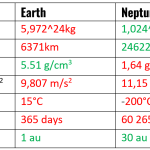 Graph-Planet-Comparison-1.png
Graph-Planet-Comparison-1.png Graph-Star-Comparison-1.jpg
Graph-Star-Comparison-1.jpg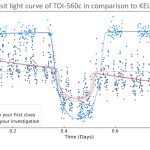 Graph-TOI-and-KELT-comparison.jpg
Graph-TOI-and-KELT-comparison.jpg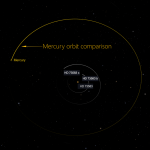 Image-Orbit-Comparison-1.png
Image-Orbit-Comparison-1.png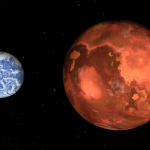 Image-Planet-Comparison.png
Image-Planet-Comparison.png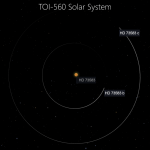 Image-Solar-System-1.png
Image-Solar-System-1.png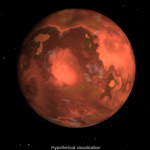 Image-TOI-560c-appearance.png
Image-TOI-560c-appearance.png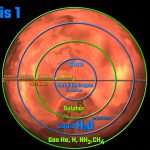 Hypothesis-1-4-scaled.jpg
Hypothesis-1-4-scaled.jpg Hypothesis-2-4.jpg
Hypothesis-2-4.jpg Hypothesis-3-4.jpg
Hypothesis-3-4.jpg Graph-orbital-period-2.png
Graph-orbital-period-2.png Graph-Planetary-Mass-II-1.png
Graph-Planetary-Mass-II-1.png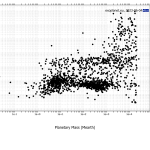 Graph-Planetary-Mass-1.png
Graph-Planetary-Mass-1.png planeterra_poster-scaled.jpg
planeterra_poster-scaled.jpg

